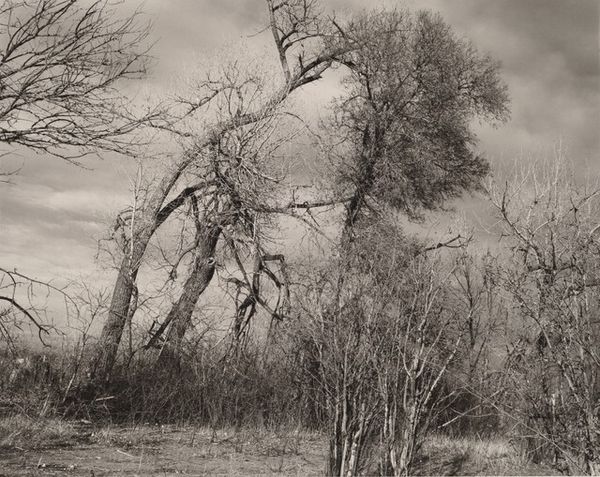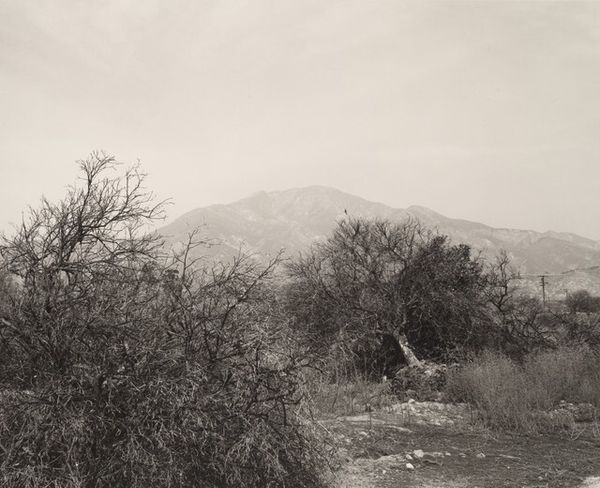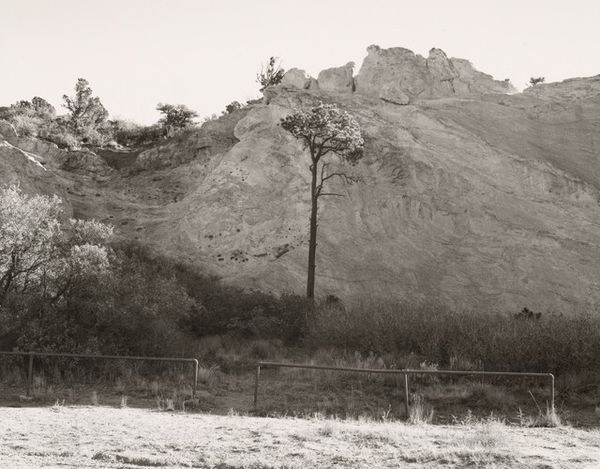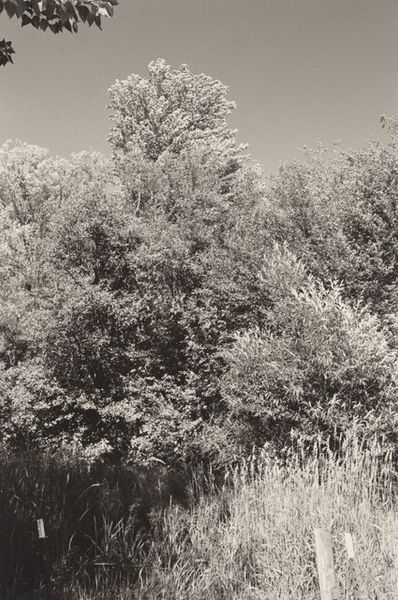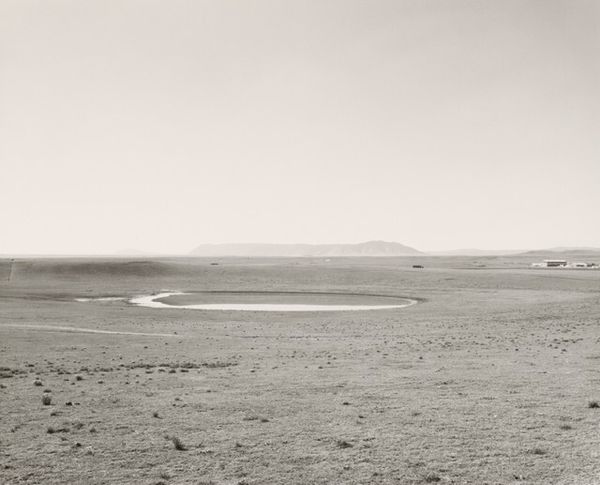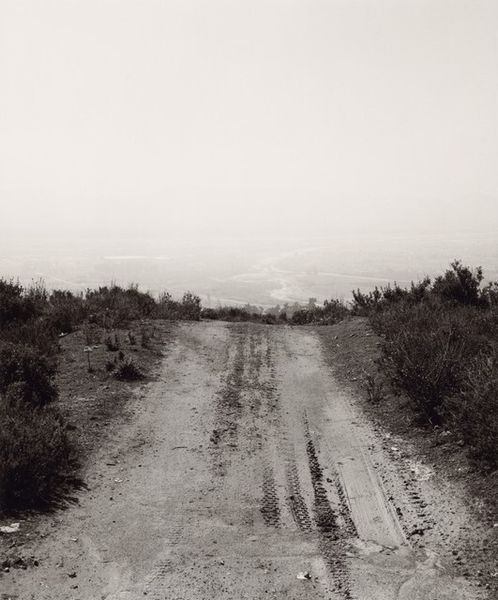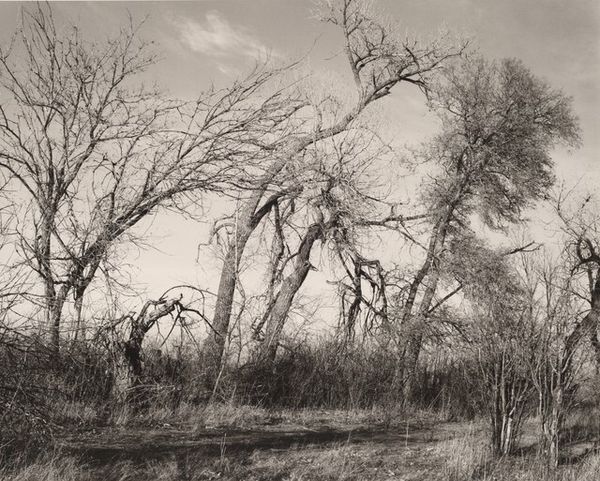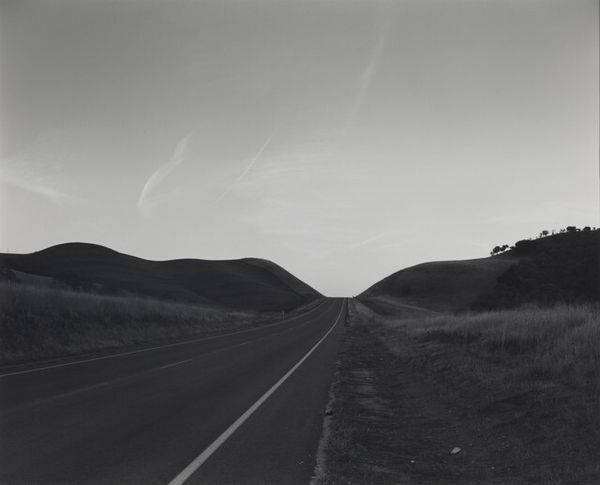
Dimensions: image: 22.8 × 28.4 cm (9 × 11 3/16 in.) sheet: 27.7 × 35.4 cm (10 7/8 × 13 15/16 in.)
Copyright: National Gallery of Art: CC0 1.0
Curator: Robert Adams' gelatin-silver print, "Looking toward Golden, Colorado," made in 1977, presents a seemingly simple landscape. Editor: It strikes me as simultaneously bleak and hopeful. That central tree, barren as it is, somehow insists on growth against the odds. And the monochrome, the almost oppressive gray scale, pushes all that further. Curator: Adams was deeply concerned with the impact of suburban development on the American West, specifically Colorado. He photographed these landscapes with an almost clinical eye, documenting what he saw as a profound loss of the natural world. Consider the materiality itself: the gelatin silver process, how it renders this tonality... the way it preserves details, however subtle, within each print. Editor: And in those muted tones, the mesa formations in the distance, are reminiscent of ancient ruins or perhaps even headstones. I wonder if that alludes to the demise of native ways of life as the suburban sprawl marched across their ancient homelands? The riverbed also acts as a visual metaphor. Note how the riverbed leads our eyes but has no water. Dry riverbeds in indigenous symbology represents the loss of their spiritual traditions. Curator: Interesting observation about the river. And from a purely materials standpoint, we should consider the economic aspects that made suburban development in the American West viable. Availability of land, cheap labor, access to resources… Adams doesn't explicitly show us any houses, yet we *feel* their presence through the sheer *absence* of what was once there. Editor: I think the skeletal tree, then, becomes an emblem of resilience. It points not only toward loss but hints toward possible regeneration. It is a marker along the way that whispers of cultural memory amid the landscape's rapid transformation. It is the crossroads to the mesa’s past. Curator: So, rather than solely seeing it as bleak, as your first impression suggested, the print functions as an indictment coupled with an attempt to recover some of the lost value. I see what you’re getting at and I think focusing on these connections reveals both the photographer’s sharp perspective on what has occurred, but also, your insight offers hope to what is to come. Editor: Yes, that visual cue offers possibilities to restore ecological and indigenous connectivity by becoming culturally responsible consumers. It has been such a pleasure taking a new look at this artwork with you!
Comments
No comments
Be the first to comment and join the conversation on the ultimate creative platform.
